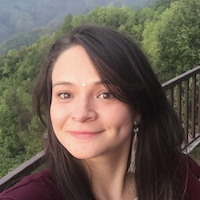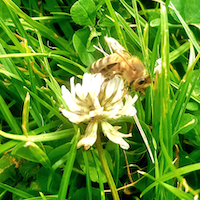Our team

Simon Dellicour
F.R.S.-FNRS Research Associate (ULB) and Visiting Professor (KU Leuven)
Interested in molecular and spatial epidemiology and population, landscape, and conservation genetics

Marius Gilbert
Full Professor, Vice-rector of research and valorization, Vice-rector of culture and scientific mediation
Interested in spatial epidemiology, emerging zoonoses, One Health and livestock production systems

Claire Lescoat
Post-doc
Interested in infectious diseases, molecular epidemiology and spatial modelling epidemiology

Marie-Cécile Dupas
Post-doc
Interested in network analysis, One Health and modelling livestock flows

Liana Kafetzopoulou
Post-doc
Interested in viral genomics, intra-host evolution and molecular epidemiology

Camille Pelletier
Post-doc (co-supervision M. Jacquot, Ifremer)
Interested in viral epidemiology, marine ecology & pathogens and landscape phylogeography

Armando Rivera
PhD Student
Interested in spatial modelling, livestock mapping and greenhouse gas emission

Kyla Serres
PhD student
Interested in eco-epidemiology, infectious diseases and spatial epidemiology

Cedric Marsboom
PhD student
Interested in modelling of flaviviruses, wave front invasion modelling and arboviruses and their vectors

Jonathan Thibaut
PhD student (co-supervision, KU Leuven)
Interested in artificial intelligence, machine learning, contact tracing and phylogenetics

Nena Bollen
PhD Student (co-supervision, KU Leuven)
Interested in public health, epidemiology, viral phylogeography and visualisation

Yimin Li
PhD Student (co-supervision, KU Leuven)
Interested in phylodynamic, viral phylogeography and visualisation

Samuel Muchiri
PhD Student (co-supervision, Open University, UK)
Interested in geospatial analysis, ecological modelling analysis and mosquitos

Diana Erazo
Scientific Collaborator
Interested in disease ecology, emerging zoonoses, spatial modelling and model fitting and inference for infectious disease dynamics

Guillaume Ghisbain
Scientific Collaborator
Interested in insect taxonomy, insect ecology and insect conservation

Darlan Candido
Scientific Collaborator
Interested in molecular epidemiology, phylodynamics and polio and arboviruses

Thomas Van Boeckel
Scientific Collaborator
Interested in antimicrobial resistance, disease mapping and livestock production systems

Augustin Jacques de Dixmude
Logistic/technical supports
Interested in chemistry, nature, ethology, programming

Séverine Hasbroucq
Lab. technician
Interested in insect rearings, plant health and field work and logistic
Past members
Staff and PhD students
Maria Vincenti-González, post-doc (2021-2024). Post-doctoral researcher working on the European MOOD project.
George Whittle, research assistant (2023-2024). Development of an early warning HPAI outbreak tool using species niche modelling.
Diana Erazo, post-doc (2020-2024). Combining spatial epidemiology and climate science to assess the risk of arbovirus circulation in a warmer, wetter, and more populated world.
Guillaume Ghisbain, post-doc (2022-2023). Dynamics and drivers of insect invasions in Europe.
Daniel Schar, PhD student (2019-2023). Antimicrobial resistance in aquaculture and fisheries A geospatial modeling approach.
Jean Artois, PhD student and post-doc (2016-2022). Spatial distribution of avian influenza in humans, poultry and wild birds.
Yann Forget, PhD student and post-doc (2015-2021). The availability and accessibility of health services in space and time.
Christoffer Axelsson, post-doc (2018-2020). Livestock distribution models as part of the Gridded Livestock of the World project.
Maude Jacquot, post-doc (2019-2020). Evolutionary and epidemiological processes that shape bacterial and/or viral genetic diversity.
Catherine Linard, post-doc (2009-2019). Mapping humand population in Africa.
Madhur Dhingra, PhD student (2015-2019). Highly Pathogenic Avian Influenza: risk models and risk management.
Celia Chaiban, PhD student (2015-2019). Current challenges in mapping livestock populations: representing production systems in space.
Gaëlle Nicolas, post-doc (2013-2017). Progresses in the Gridded Livestock of the World and application of spread models to livestock diseases.
Weerapong Thanapongtharm, PhD student (2011-2015). Modelling the distribution of pig production and diseases in Thailand.
Thomas Van Boeckel, PhD student (2009-2013). Intensive poultry production and highly pathogenic avian influenza H5N1 in Thailand: statistical and process-based models.
Vincent Martin, PhD student (2009-2012). Spatial distribution of ecological and socio-economic/trade related factors contributing to the persistence and spread of highly pathogenic avian influenza H5N1, with a special focus on southern China.
Giuliano Cecchi, PhD student (2008-2011). Biogeographical patterns of African trypanosomoses for improved planning and implementation of field interventions.
Thibaud Rigot, PhD student (2006-2011). Contribution à l'étude de la distribution spatio-temporelle du genre Culicoides, principal vecteur de la fièvre catarrhale ovine.
Julien Cappelle, PhD student (2006-2010). Évaluation éco-épidémiologique du risque d'émergence du virus Influenza Aviaire Hautement Pathogène H5N1 dans le Delta Intérieur du Niger au Mali via l'avifaune sauvage.
Lenny Hogerwerf, research assistant (2008-2009). Agro-ecology of avian influenza in Asia.
MSc students
Marie Stavaux (2025). Decoding the dispersal dynamic of main SARS-CoV-2 variants of concern at a national scale – Belgium as a case study.
Kerryan Hermans (2025). Evolution of the risk of human exposure to tick-borne encephalitis in Europe in a context of global change.
Maureen Raes (2025). Forecasting poultry disease risks in Bangladesh by 2050: exploring the impact of farm size and density scenarios.
Pauline Borget (2024). The impact of farm distribution patterns and intensification scenarios on disease risks in southeast asia : a spatial point processes modelling approach.
Lucas Degrève (2024). Spatial modelling of illegal hunting and chimpanzee distribution in the Seringbara region of the UNESCO Mount Nimba Strict Nature Reserve in Guinea.
Loïc Gonzalez (2024). Ecological niche modelling of the main tick-borne encephalitis virus subtypes: a comparative analysis at the palearctic scale.
Alexandre Massart (2024). Proposition d’une méthodologie pour définir les zones à Haute Valeur de Conservation (HVC) : étude de cas avec les espèces de plantes menacées d’extinction dans les concessions forestières du Gabon.
Adrien de Fraipont (2023). Phylogeographic analysis of the 2018 2020 Ebola virus outbreak in the North Kivu province of the Democratic Republic of the Congo.
Kyla Serres (2023). Assessing the impact of climate and land use changes on the emergence of chikungunya virus in europe .
Anna Bailly (2023). La dénutrition dans les hôpitaux belges et son association avec le devenir du patient?.
Garance Depréaux (2023). Investigating how disease risk mapping could benefit from online news sources: the case of West Nile virus in Europe.
Wafae Elboubekri Alaoui (2022). Analyse des introductions du cerf élaphe en Wallonie au moyen de marqueurs génétiques.
Boustani Zakaria (2018). Modélisation des flux migratoires de palmipèdes:Mise en évidence des interfaces aviaires à risque d’influenza à partir de données d’occurrences asiatiques.
Verheyden Lisa (2018). Analyse spatiale de l'association entre riziculture et élevages de canards domestiques de l'Asie du sud-est.
Babin Léon (2018). Étude et Modélisation de la distribution de Monochamus spp. dans les forêts de pins en Europe.
Boucart Jérémie (2016). Analyse spatio-temporelle des flux commerciaux internationaux d’animaux d’élevage.
Allaert Michael (2016). Utilisation de données de téléphonie mobile pour l’évaluation de l’exposition à l’hantavirus en Belgique.
Lola Romero-Pinazzo (2015). Modélisation spatiale prédictive de trois espèces hôtes sauvages de l’influenza aviaire en Europe et en Asie à partir de données d’occurrences européennes.
Florian Duchatel (2014). Développement d'un modèle multi-agents pour l'étude de la distribution spatio-temporelle du risque de transmission de la grippe aviaire autour du lac Poyang (Chine).
Celia Chaiban (2014). Analyse de la distribution géographique des différents clades d’influenza A H5N1 dans la région du Mékong.
Colin Michel (2014). Modélisation spatio-temporelle de l'invasion de la France par la mineuse du marronnier Cameraria ohridella: nouvelles approches méthodologiques.
Fanny Claes (2013). Evaluation et cartographie du risque d’influenza aviaire, à l’aide de la télédétection, dans la province de Tananarive à Madagascar.
Valentine Simar (2010). Caractérisation de la présence du marsouin commun (Phocoena Phocoena) en baie Sud de la Mer du Nord et Manche orientale.
M. Vercauteren (2009). Distribution des adultes du genre Culicoides, vecteurs de la fièvre catarrhale ovine, en fonction de la distance à l'exploitation.
F. Seghouane (2009). Analyse de la distribution du genre Culicoides, vecteur de la fièvre catarrhale ovine à l'échelle du paysage.
S. Desphande (2009). Epidémiologie spatiale des défoliateurs des chênes en France sur base de dispositifs de surveillance entomologique.
A. Pirard (2007). Géographie économique de la grippe aviaire hautement pathogène IAHP H5N1.
Y. Levy (2006). Modélisation spatiale des populations d'Ips typographus en phase épidémique.
P. Bonato (2006). Suivi de populations endémiques d'Ips typographus (Coleoptera : Scolytidae) en Région Wallonne à l'aide d'un réseau de pièges à phéromones.






